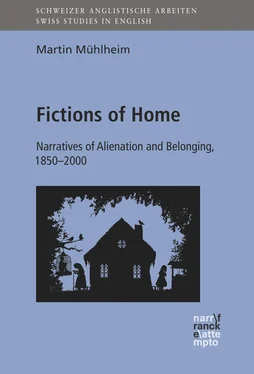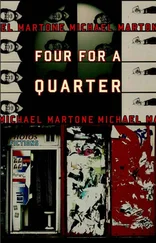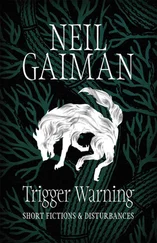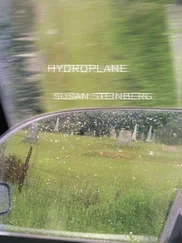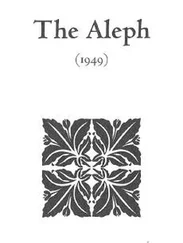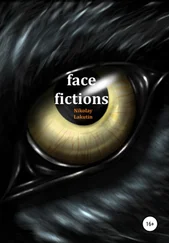MARY
“Her voice is so low I can scarcely tell what she is saying. She says, she says she thinks she could get well again if childrenchildren believed in fairies. Do you believe in fairies? Say quick that you believe!” […]
GERTIE
I do, I do, I do! (Matthison 104; cf. J.M. BarrieBarrie, J.M. 145).
It is precisely during this scene about childrenchildren’s beliefbelief in fairies that Elliott, hidden in the closet, cuts himself on a sawblade and starts to bleed, which prompts E.T. to heal the boy’s wound with the gentle touch of a finger (MathisonMathison, Melissa 103–104). This surprising juxtaposition suggests a parallel between, on the one hand, a belief in the healing powers of a MessiahMessiah figure, and, on the other, a belief in fairies – as if the two were one and the same.22 This, in turn, illustrates the extent to which intertextualintertextuality play can develop a dynamic of its own, with various strands of references becoming entangled and sometimes tied up in complicated knots. Put differently, the interplay between E.T. ’s combined references to Peter Pan and to the story of JesusJesus Christ ChristJesus Christ shows that the use of canonical intertexts may – intentionally or not – lead to moments of friction that end up defamiliarizdefamiliarizationing the well-known originals.23 In this way, literary traditions are opened up to critique – as is the case in George Eliot’s The Mill on the Floss , which we will examine in chapter two, and which, like E.T. and Peter Pan , revolves around the problem of growing up, the protagonists’ occasionally nostalgicnostalgia relation to home and belonging, and the critical use and reexamination of established discursive traditions (including genres such as the BildungsromanBildungsroman and tragedytragedy).
The Question of Racism and the Politics of Home
In the case of E.T. , we can widen the political scope of intertextualintertextuality critique if we focus on a third set of references that relates, on the one hand, to other films featuring aliens, and, on the other, to one of the most canonical of English novels: Daniel DefoeDefoe, Daniel’s Robinson Crusoe . Admittedly, Robinson Crusoe is far less prominent a presence in the film than is Peter Pan or the story of JesusJesus Christ. Nevertheless, relating E.T. to DefoeDefoe, Daniel’s novel helps us capture more precisely some of the film’s political import. The most famous section of DefoeDefoe, Daniel’s novel tells the story of how Crusoe ends up stranded on an island that he soon regards as his “little kingdom” (109). Accordingly, many critics have insisted that the novel’s ideologyideology is deeply colonialistcolonialism; after all, it depicts a white man appropriating new territory that he subsequently defends against native ‘intruders’ – with the exception of one, whom he turns into his personal slave, imposing on him a new name, a new language, and a new religionreligion (e.g. Carter and McRae 154–155; Stam 71–74). Given this colonialistcolonialism ideology, one may begin to wonder for whom, precisely, the canoncanon comprises “the best that has been said and thought in the world” – and critiques of this kind have of course long been central to the larger project of postcolonial studies.24 In the context of our discussion, however, it is sufficient to note that the story of Robinson Crusoe contrasts markedly with SpielbergSpielberg, Steven’s E. T. , whose title character, like Crusoe, is stranded alone on alien shores, but who, unlike Crusoe, harbors no aspirations to dominate the natives.
The contrast between E.T. and Robinson Crusoe is all the more remarkable if we bear in mind that, in the decades following the 1950s, a large number of American films featuring aliens had revolved precisely around the threat of invasion (e.g. Booker, Alternate Americas 5). This is not, of course, to claim that there had never before been films in which aliens were portrayed as benevolent creatures. For instance, in The Day the Earth Stood Still (1951), the alien Klaatu is on a mission to save rather than destroy the human race by forcing it to abandon its selfself-destructive ways. Moreover, SpielbergSpielberg, Steven himself had previously scored a huge box-office hit with Close Encounters of the Third Kind (1977), which also features benevolent aliens. The point, however, is that, in E.T. , the agents of the governmentgovernment behave as if the aliens were aggressors (as many other fictional aliens – including Crusoe – in fact had been). Home is, in short, not a pre-political space, but a conflictual terrain that usually involves the systematic exclusionexclusion of those perceived as alien (Rosemary MarangolyGeorge, Rose Marangoly George 9).
One way to account for the irrational fear exhibited by the governmentgovernment agents in E.T. is to use Stephen D. ArataArata, Stephen D.’s diagnosis that imperial centers may at times suffer from an “anxietyanxiety & angst of reverse colonization.” In a reading of Bram StokerStoker, Bram’s Dracula , ArataArata, Stephen D. argues that the Transylvanian Count serves as a mirror-image of Western colonizers: an alien from the East who has spent much time and effort to acquire useful knowledgeknowledge about the Occident, and who plans to use this knowledge “to invade and exploit BritainBritain and her people” (638). According to ArataArata, Stephen D., StokerStoker, Bram’s novel must be read against the backdrop of a fin-de-siècle perception of declinedecline of Britain as an imperial power (622). This narrative of imperial decline, in turn, explains a widespread anxietyanxiety & angst of reverse colonization, which ArataArata, Stephen D. defines as the impression that “what has been represented as the ‘civilized’ world is on the point of being colonized by ‘primitive’ forces” (623). ArataArata, Stephen D. insists, however, that geopolitical fears are only half the story, with metropolitan guiltguilt constituting a second key ingredient:
In the marauding, invasive Other, British culture sees its own imperial practices mirrored back in monstrous form. […] Reverse colonization narratives thus contain the potential for powerful critiques of imperialist ideologies, even if that potential usually remains unrealized. (623)
In ArataArata, Stephen D.’s view, then, anxieties of reverse colonization project the colonizing practices of the metropolis back onto the screen of an alien Other, who may then serve as a fantasied scapegoatscapegoat figure.
If it is true that Dracula constituted a projectionprojection of late VictorianVictorian British guiltguilt, then E. T. – that dark-skinned alien who secretly enters a white suburbansuburbia home – perhaps fulfills a similar scapegoatscapegoat function for a guilt-ridden United StatesUnited States of America EmpireEmpire.25 William AlexanderAlexander, William, for instance, argues that E.T. is suffused with markedly racistracistm sentiments. In the film, AlexanderAlexander, William contends, E.T. is subliminallysubliminal associated not only with monkeys (by being shown next to a monkey doll; FIGURE 5), but also with primitivism (he comes from the woods and possesses magic powers) and with the ‘non-white’ places of the earth (at one point E.T. is shown standing in front of a globe on which the audience can see AsiaAsia and AfricaAfrica; FIGURE 6). For AlexanderAlexander, William, the verdict is therefore clear:
[SpielbergSpielberg, Steven’s film] brings the threatening, righteously angry figure – the unemployed black youth, the guerrilla fighter of Central America who has said ‘enough’ to the centuries of hunger, the starving Latin American child, the napalmed Vietnamese peasant we are trying to forget, the minimum wage worker, the potential disrupter of suburbansuburbia comfort and economic status – into the suburb. (33)26
Читать дальше
